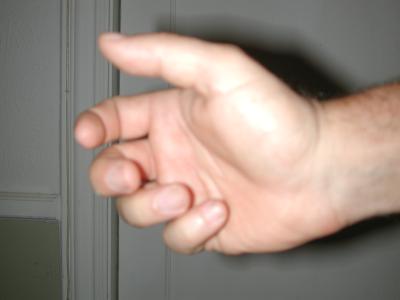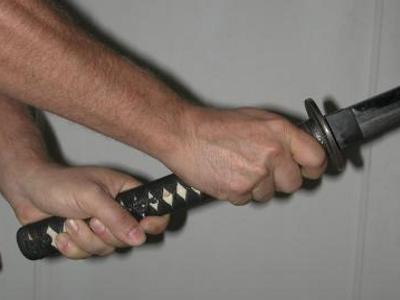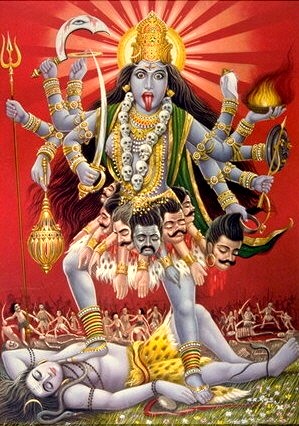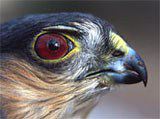Blocking
/At the technique-level circular movements are often used to simultaneously re-direct and strike. These moves are in a sense blocks even if they are also strikes.
But when I was ten years old and started learning Springy-Legs, Tantui (Northern Shaolin), I had to develop solid stances. A good way to test six harmonies power in each stance is to see if the student can keep their arm up while you take a swing at them. Beginning students should pass through a blocking-techniques stage of practice. Good blocking skills can help with integration, structure and relaxation.
I went to a middle school (age 11-13) where kids wore razor-blades on chains around their necks. It was a sweet time. The Latino gangs were the most dangerous, but I was on the inside of that by the middle of my second year. Some of the taller black kids were under a lot of pressure to prove themselves
At the end of the P.E. (Physical Education) period we went into the locker room to change out of our P.E. uniforms and back into our street clothes. The locker aisles were exquisitely dangerous, we all learned to change in under 20 seconds. But the time alotted for changing was more like 10 minutes so about 50 of us would cram into this space with the lockers to our backs and the doors to freedom in front of us for 9 minutes and 40 seconds.
This wide hallway had a red line that split the room in half. O.J. Simpson went to my Middle-School and his first-place time in Track was on the top of the board in this very hallway. On one half of the hallway were the doors to freedom and a gym teacher, on the other half all of us, crammed together. We were all wearing backpacks which served as a little bit of spine protection. The taller black kids would practice punching everyone else. If you kicked or punched back, the possibility of major escalation was high. The best strategy was to block the punches.
I did not advertise my Shaolin training, however those blocking skills proved to be pretty handy, and earned me some "respect."
Blocking skills should be discarded if you want to develop higher level, non-defensive, skills. Still they have a place.

 I stopped at a gas station in the middle of nowhere on the way to the mountains last month. I checked the oil and it was pretty low so I bought a couple of quarts. I worked in a gas station when I was 14 so I know some tricks for getting a good grip, but my engine was really hot and the oil cap wouldn't budge. I went looking around in my trunk for someway to get more leverage and came up empty. I felt my manhood was being challenged. Just then a thick stocky man, about 6 inches shorter than me said, "Can I give you a hand." I'm sure I looked embarrassed but then I looked at his hands and they were clearly twice the size of mine, his fingers were as thick as cigars. "Sure, uhh...thanks" I said, and he unscrewed it. I asked where he got such huge hands and he said it was his Scottish ancestry.
I stopped at a gas station in the middle of nowhere on the way to the mountains last month. I checked the oil and it was pretty low so I bought a couple of quarts. I worked in a gas station when I was 14 so I know some tricks for getting a good grip, but my engine was really hot and the oil cap wouldn't budge. I went looking around in my trunk for someway to get more leverage and came up empty. I felt my manhood was being challenged. Just then a thick stocky man, about 6 inches shorter than me said, "Can I give you a hand." I'm sure I looked embarrassed but then I looked at his hands and they were clearly twice the size of mine, his fingers were as thick as cigars. "Sure, uhh...thanks" I said, and he unscrewed it. I asked where he got such huge hands and he said it was his Scottish ancestry.


 hand doesn't usually close.
hand doesn't usually close. is painful to hold a solid, tightly packed fist for five minutes unless your technique is good. If it hurts, it is wrong (the spirits have left the body.)
is painful to hold a solid, tightly packed fist for five minutes unless your technique is good. If it hurts, it is wrong (the spirits have left the body.) I went to two parties after teaching all morning yesterday, so I haven't had time to edit all the comments in moderation. Sorry I'll get to it soon.
I went to two parties after teaching all morning yesterday, so I haven't had time to edit all the comments in moderation. Sorry I'll get to it soon. When you move forward, you should have the feeling that objects- people, rocks, trees- are being drawn-in toward you, not that you are getting closer to them." (I'm paraphrasing here.)
When you move forward, you should have the feeling that objects- people, rocks, trees- are being drawn-in toward you, not that you are getting closer to them." (I'm paraphrasing here.) Sinking one's center of gravity.
Sinking one's center of gravity.
 When I saw a book titled,
When I saw a book titled,  In recent years a lot of qigong that is popularly taught has been categorized as martial arts qigong. (I think it is mistake to use this category in the first place, but if we do use it we will have to divide it up further.) This would be qigong created by and for people who were put in the position of needing to fight.
In recent years a lot of qigong that is popularly taught has been categorized as martial arts qigong. (I think it is mistake to use this category in the first place, but if we do use it we will have to divide it up further.) This would be qigong created by and for people who were put in the position of needing to fight. xing yi and bagua. This type has the flavor and reluctance characteristic of those who cultivate weakness. In this tradition the battle field is viewed as an expression of qi. The battle field substitutes for the body in which the smooth flowing of qi is a priority, not avoiding war, but being uncontentious. Looking for resolution is different than trying to win, although winning may be necessary for your survival. This is not a passive tradition, in fact attacking first can easily be the quickest cleanest resolution with the least loss of life on both sides. How this tradition came about is an interesting question I plan to continue exploring. Perhaps people who had been cultivating weakness, were drafted and this was a natural expression of their circumstance. This third traditions takes the longest to develop usable skills, and seems like a privileged position with in a military world.
xing yi and bagua. This type has the flavor and reluctance characteristic of those who cultivate weakness. In this tradition the battle field is viewed as an expression of qi. The battle field substitutes for the body in which the smooth flowing of qi is a priority, not avoiding war, but being uncontentious. Looking for resolution is different than trying to win, although winning may be necessary for your survival. This is not a passive tradition, in fact attacking first can easily be the quickest cleanest resolution with the least loss of life on both sides. How this tradition came about is an interesting question I plan to continue exploring. Perhaps people who had been cultivating weakness, were drafted and this was a natural expression of their circumstance. This third traditions takes the longest to develop usable skills, and seems like a privileged position with in a military world. What does quan mean? As in the terms taijiquan, xingyiquan, shaolin quan. The standard answer is that it literally means fist, but in context means boxing or art. Thus taijiquan means 'the taiji style of boxing' or 'the fighting art of taiji.' (For a definition of
What does quan mean? As in the terms taijiquan, xingyiquan, shaolin quan. The standard answer is that it literally means fist, but in context means boxing or art. Thus taijiquan means 'the taiji style of boxing' or 'the fighting art of taiji.' (For a definition of  As I've said elsewhere
As I've said elsewhere 
 Another possible source of gongfu is as a form of physical training to survive trance. As I've already said, the trance-medium tradition was pervasive in China for most of its history. Full-on possession by a god, as happens in both African religion and Chinese religion, is extremely taxing on the body. Wild movements may toss, whip, shake and gyrate the possessed person. I suspect that at some time in the distant past, this experience was a near death one; people who were repeatedly possessed had shorted lives. Yet in Africa as in China people who become possessed have extraordinary physical training which allows them to survive, some even with radiant health. In Africa this training is dance, and in China, at least in Taiwan and the South East Asian Chinese Diaspora, it is gongfu.
Another possible source of gongfu is as a form of physical training to survive trance. As I've already said, the trance-medium tradition was pervasive in China for most of its history. Full-on possession by a god, as happens in both African religion and Chinese religion, is extremely taxing on the body. Wild movements may toss, whip, shake and gyrate the possessed person. I suspect that at some time in the distant past, this experience was a near death one; people who were repeatedly possessed had shorted lives. Yet in Africa as in China people who become possessed have extraordinary physical training which allows them to survive, some even with radiant health. In Africa this training is dance, and in China, at least in Taiwan and the South East Asian Chinese Diaspora, it is gongfu. This is also one of my favorate explanations for the difference between internal and external martial arts (neijia and waijia). In Africa and the African Diaspora, priests and drummers are required to be familiar with the rituals for each deity and his/her particular characteristics. For instance, a particular deity is invoked through specific rhythms, dances, songs, and sacrifices. A deity might be known for being jealous, carrying a sword, being female, being associated with the color green, having a sharp wit, and of course, wielding power in a particular realm. However, both priests and drummers are forbidden to become possessed by the deity. Should they become possessed they lose their ritual statues. They are experts in managing and differentiating the different types of human trance.
This is also one of my favorate explanations for the difference between internal and external martial arts (neijia and waijia). In Africa and the African Diaspora, priests and drummers are required to be familiar with the rituals for each deity and his/her particular characteristics. For instance, a particular deity is invoked through specific rhythms, dances, songs, and sacrifices. A deity might be known for being jealous, carrying a sword, being female, being associated with the color green, having a sharp wit, and of course, wielding power in a particular realm. However, both priests and drummers are forbidden to become possessed by the deity. Should they become possessed they lose their ritual statues. They are experts in managing and differentiating the different types of human trance. forbidden to become possessed yet their training involves becoming intimate with each type of trance. Daoism is, among many things, a systematic ordering of all types of deities by the characteristics of their local or national cults--and by the specific types of trance that lead to possessions by particular deities.
forbidden to become possessed yet their training involves becoming intimate with each type of trance. Daoism is, among many things, a systematic ordering of all types of deities by the characteristics of their local or national cults--and by the specific types of trance that lead to possessions by particular deities. A saying of Confucius: "never worry your parent’s unless you are sick" has been interpreted to mean that children (starting at age 7 or 8 ) should be given substantial responsibility for maintaining their own health. This often manifests through the study of gongfu.
A saying of Confucius: "never worry your parent’s unless you are sick" has been interpreted to mean that children (starting at age 7 or 8 ) should be given substantial responsibility for maintaining their own health. This often manifests through the study of gongfu. someone would likely have to be found and trained to replace you, or perhaps your business would close and all the people it serves would have to find that service elsewhere. Emotional conduct can linger after death too. Hatred of a particular ethnic group can be passed on to ones children, as can a habit of drinking alcohol to numb depression.
someone would likely have to be found and trained to replace you, or perhaps your business would close and all the people it serves would have to find that service elsewhere. Emotional conduct can linger after death too. Hatred of a particular ethnic group can be passed on to ones children, as can a habit of drinking alcohol to numb depression.